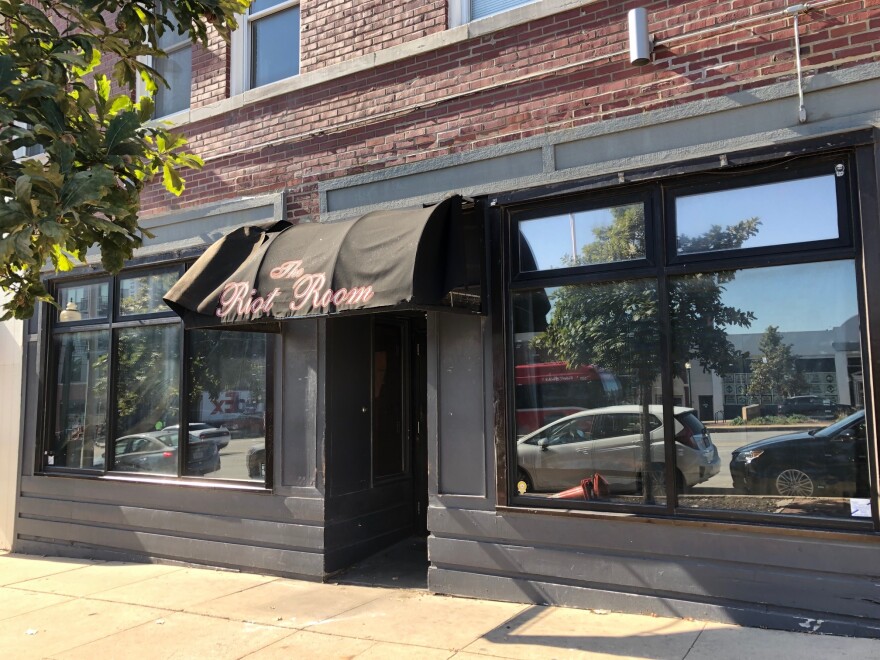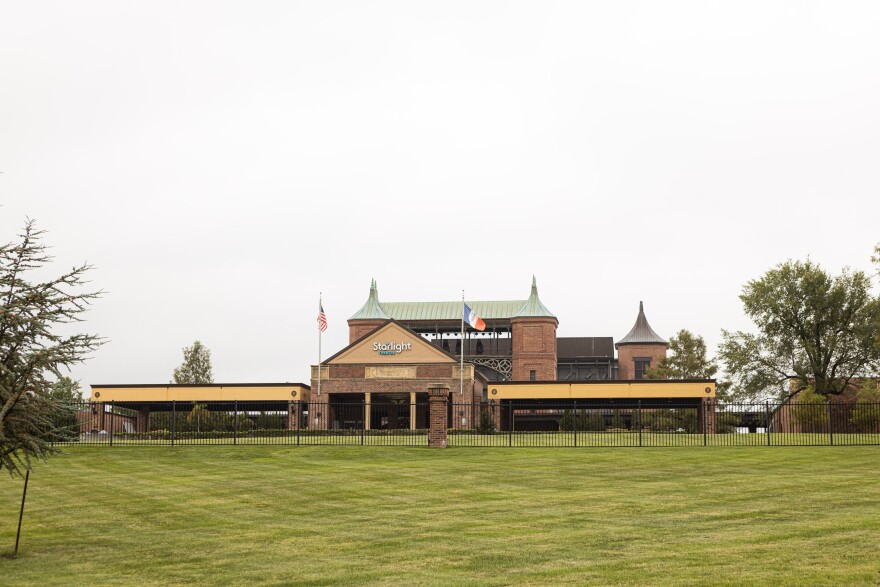Unlike some other local businesses, the Kansas City Zoo could not let its entire staff work from home when it closed its gates to the public at the start of the pandemic.
It had 1,700 animals that needed care.
“You can’t clean an elephant’s enclosure from home,” said Randy Wisthoff, the zoo’s CEO and executive director.
About 125 employees, from animal keepers to the facilities crew, continued working through the shutdown.
But while upkeep costs remained about the same, the zoo’s attendance dropped sharply. It recorded 537,000 visitors in 2020 compared to prepandemic projections of 935,000 to 950,000, Wisthoff said. Still, the zoo was able to maintain staff salaries and avoid the layoffs that plagued so many other businesses.
The reason? Grants from the federal government.
“These funds that are coming to us, especially over here on the nonprofit side, they’ve just been a godsend to our business and to our employees,” Wisthoff said. “You don’t get rich being a zookeeper. Not losing your job and not having your salary affected has really, really, really been very much appreciated by the workforce.”
One of the federal grants was the Shuttered Venue Operators Grant. Created via federal legislation passed in late 2020, the program helped venues like the Kansas City Zoo, theaters and concert venues recover from the economic losses caused by the COVID-19 pandemic. The Small Business Administration opened up SVOG applications in April.
The SVOG, which stopped accepting applications in August, had $16 billion available to distribute. The maximum grant amount allowed was $10 million.
Some of those funds came to Kansas City establishments. A Kansas City Beacon analysis of SVOG data found that 48 businesses in Kansas City, Missouri, and Kansas City, Kansas, received grants, for a collective total of nearly $51.2 million. Out of the 48 businesses, 12 received grants over $1 million.
The Kansas City Zoo received almost $4.6 million from the program. Among other things, it allowed the management to start hiring employees to fill positions that went vacant through attrition during the pandemic.
“The SVOG allowed us to come back and get back as close to full staff as we could possibly get,” Wisthoff said.

How the grant helped ease pandemic pains
The Shuttered Venue Operators Grant helped other local attractions ease pandemic worries and losses.
Jeff Bentley, executive director of the Kansas City Ballet, said the organization runs on a budget of $9.5 million to $10 million in a normal, nonpandemic year. Contracts with dancers typically run for 35 weeks in a year.
The pandemic changed that — from March 2020 to June 2021, the Kansas City Ballet hosted zero performances.
Contracts were reduced to 28 weeks, Bentley said. Three staff members were let go. The ballet reduced compensation.
“The budget overall was about $4.5 million,” Bentley said. “So it was basically cut in half.”
Bentley estimates that the ballet lost about $4 million in ticket revenue and tuition.
“That’s not over,” he said. “My point is these losses are going to continue until we can get audiences back into the venues feeling safe and in a healthier environment.”
The Kansas City Ballet received $1.3 million from the SVOG. Bentley said the money was used to pay dancers and other employees, and for maintenance expenses.
“The impact is enormous,” he said. “I mean, it’s one of the significant things that kept us, frankly, able to continue to operate. At that point, we have no income coming in whatsoever. So it was essential for us.”
In addition to federal grants, Bentley said donations from patrons also helped.
“That is the other pillar on which we really depended and will continue to depend (in the) next year or two, to get audiences back feeling like they can be comfortable in a hardshell inside venue, where you have 1,800 seats and people will be sitting next to each other, in front of each other and behind each other,” he said. “So until it gets back to that level of comfort, we are going to be challenged.”
In a normal year, Starlight Theatre in Kansas City’s Swope Park hosts about five Broadway shows, weekend specials and about 25 concerts.
But the theater remained empty throughout most of 2020.
“In 2020, there was just nothing,” said Richard Baker, president and CEO. “Even this year was greatly scaled back because there just weren’t many shows touring.”
The Starlight Theatre was fortunate — it had enough money left over in its endowment to stay afloat as live shows ground to a halt.
“But quite frankly, we thought, ‘Oh, there goes our rainy day fund,’” Baker said. “That’s how we got through before the SVOG came in.”
The Starlight Theatre received $6.5 million from the SVOG program — the second highest grant amount among Kansas City venues. That, combined with the theater’s endowment, helped it weather the pandemic.
Still, Starlight had to furlough some staffers and cut pay to reduce its overhead, Baker said.
“When your revenues go from $24 million, for example, down to maybe $3 (million) or $4 (million), all of a sudden, that’s a huge shortfall to make up,” Baker said. “The SVOG really was a lifesaver.”
Not receiving a grant meant shutting down
For more than 10 years, the Riot Room in midtown Kansas City was a frequent spot for local music heads. But last Friday, after hosting hundreds of shows and concerts, the Riot Room closed its doors for good.
“It was brutal, man. We had been in business almost 15 years — it’s our life’s work,” said owner Tim Gutschenritter. “We’ve dedicated the biggest portion of our adult lives to the arts, and culture and community in Kansas City. It was a huge blow to not be able to do what we do anymore.”

It came down to finances — the venue’s revenue was down by 90% in the last year. Gutschenritter and the Riot Room team applied immediately to the SVOG program when it opened, hoping it would help the venue recover some of its pandemic losses.
But technical issues caused the portal to crash in April. When it reopened, Gutschenritter said the information the Riot Room previously submitted was gone.
“So we entered all the information again, and didn’t hear anything back,” he said. “And eventually, it has forced us to close our doors.”
The Riot Room never received any money from the SVOG program. It made it difficult to stay afloat and remain in their space on Broadway Boulevard.
“We had started to get communication from our landlord that they had potentially struck a deal with another tenant, and that if we were not going to get the grant money, that we needed to start making arrangements to vacate the premises,” he said.
Had the Riot Room received a grant, Gutschenritter thinks the outcomes could’ve been different.
“I definitely think with the Shuttered Venue Grant, we would have had a little bit more flexibility on being able to, a) keep the business afloat, and b), appease the landlord,” he said. “I definitely think that the grant would have been a huge step in the right direction.”
Having just announced the closure of the Riot Room, Gutschenritter is feeling a mixture of devastation and relief that the weight of the pandemic has been lifted.
“I never wanted to see the Riot Room end, obviously nothing lasts forever,” Gutschenritter said. “I don’t want to be naive, but at the same time I never thought that it would be under these circumstances.”
What the future holds for Kansas City’s venues
While most businesses, like restaurants and bars, are fully opened to the public, live venues have been slow to return to prepandemic normalcy.
This summer, without Broadway tours to host, Starlight Theatre produced two plays: “Godspell” and “On Your Feet.” It also had performances from Las Vegas illusionists and the Broadway touring show “Escape to Margaritaville.” Starlight hosted six concerts so far this year, fewer than one-quarter of its usual schedule, Baker said.
“When you normally hit 25 and you only do six, that really affects the bottom line,” Baker said. “Because the theater overhead doesn’t go away. This is a big complex. We cover 16 acres here. So it’s a lot to maintain. And you have to do that whether you’re having shows or not.”

As local venues return to live shows and live audiences, a central question hangs in the air: Will people want to attend a live show, packed with hundreds of other people, in the midst of an ongoing pandemic?
The Kansas City Ballet will soon find out. Dancers are preparing for the annual Nutcracker performances at the Kauffman Center of the Performing Arts. Of the ballet’s usual $10 million budget, Bentley said, the Nutcracker shows bring in between $2.1 million to $2.5 million.
But when the Nutcracker performances begin in December, attendees will have to provide proof of vaccination against COVID-19.
“Especially with the vaccinations not being able to be given to under-12-year-olds at this point, (we) are sure we’re going to be hit significantly in terms of revenue from Nutcracker,” Bentley said.
The Starlight Theatre is hoping to bounce back next year, with more Broadway tours and concerts planned.
“It should be a really busy summer next year, and we’re really hoping we’re back completely normal,” Baker said.
The Kansas City Zoo is seeing improvements in revenue from last year. At the start of 2021, Wisthoff said projections for zoo attendees were set at 650,000.
Wisthoff said as of October, the Kansas City Zoo has seen about 700,00 visitors so far. He said the zoo predicts it will finish the year having close to 800,000 visitors, only a 15% decrease from its normal projections.
“It was just vital that we had that SVOG money,” Wisthoff said. “So we could staff up and handle that increase in attendance that we weren’t really budgeted for.”
This story was originally published on the Kansas City Beacon.






